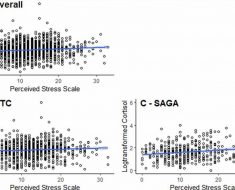
We use your sign-up to provide content in ways you’ve consented to and to improve our understanding of you. This may include adverts from us and 3rd parties based on our understanding. You can unsubscribe at any time. More info
Caffeine excess has obvious effects on the nervous system, sometimes even causing muscles to twitch, and cramp. Though the literature linking caffeine to muscle damage is scant, some reports have suggested an association exists. One such case study is that of a middle-aged woman who suffered muscle damage within hours of ingesting her coffee.
The intake of coffee or caffeine-containing drinks is appealing to some individuals in sports as it is known to assist the body in lipolysis – the breakdown of fats.
Though the side effects associated with excess coffee intake are generally minor, some case studies have highlighted a potential risk of rhabdomyolysis.
Rhabdomyolysis is a complicated condition characterised by the dissolution of skeletal muscle tissue.
It occurs when the muscle fibres dissolve quickly causing substances known as myoglobin to leak into the bloodstream.

The chief contributing factors in rhabdomyolysis are dehydration, excessive overload exercise and drug use.
In 2014, the journal of Human and Experimental Toxicology documented the case of a 44-year-old woman admitted to the hospital due to coffee-coloured urine hours after ingestive approximately four cups of coffee (100ml per cup).
The report states: “Excessive ingestion of caffeine-containing beverages is a rare cause of rhabdomyolysis.
“Here, we describe the case of a 44-year-old woman presented with nausea, vomiting, palpitations and tea-coloured urine six hours after drinking a litre of black coffee containing approximately 565 mg of caffeine for mental alertness.”
Tests revealed the patient had noticeably high levels of myoglobin in her urine, a protein present in muscle cells.
Elevated plasma creatine kinase (CK) levels were also apparent, which is generally suggestive of “recent muscle damage,” according to the Cleveland Clinic.
With appropriate treatment, the patient’s CK levels returned to normal within five days. Failure to treat rhabdomyolysis early, however, can prove fatal.
The authors concluded: “Rhabdomyolysis should be considered a potential health hazard from excessive consumption of caffeine-containing products.”

Another case, published in the American Journal of Emergency Medicine in 2014, stated that one man experienced complications of severe rhabdomyolysis and acute renal failure after ingesting 24 grams of caffeine.
James Armstrong, CEO of Veygo, explained: “The recommended amount of caffeine is up to 400 mg per day for healthy adults and up to 100 mg for adolescents which scientists now believe occurs until the age of 24.
“The average half-life of caffeine in the blood ranges from 1.5 to 9.5 hours.
“This means it can take most of the day for the level of caffeine in your blood to stop, making it difficult to know the exact amount of caffeine that can lead to an overdose.”
What’s more, Mr Armstrong warned that just like alcohol intoxication, the risk of caffeine excess in the blood can be just as dangerous for activities like driving.
“It’s also important to stress that drinks (of any kind) should not be consumed while driving as this impairs our concentration and control of the vehicle,” he noted.
Though caffeine intoxication is unlikely with coffee, the Iranian Journal of Public Health suggests it may be worth considering a person’s sensitivity to caffeine when assessing the risk of rhabdomyolysis from caffeine-containing drinks.
“A person who has a relatively high caffeine sensitivity or combines exercise and high caffeine intake for weight loss should be made aware of the risks for rhabdomyolysis and its early symptoms and should seek prompt treatment before worsening of the symptoms,” explained the authors in the journal.
Source: Read Full Article





